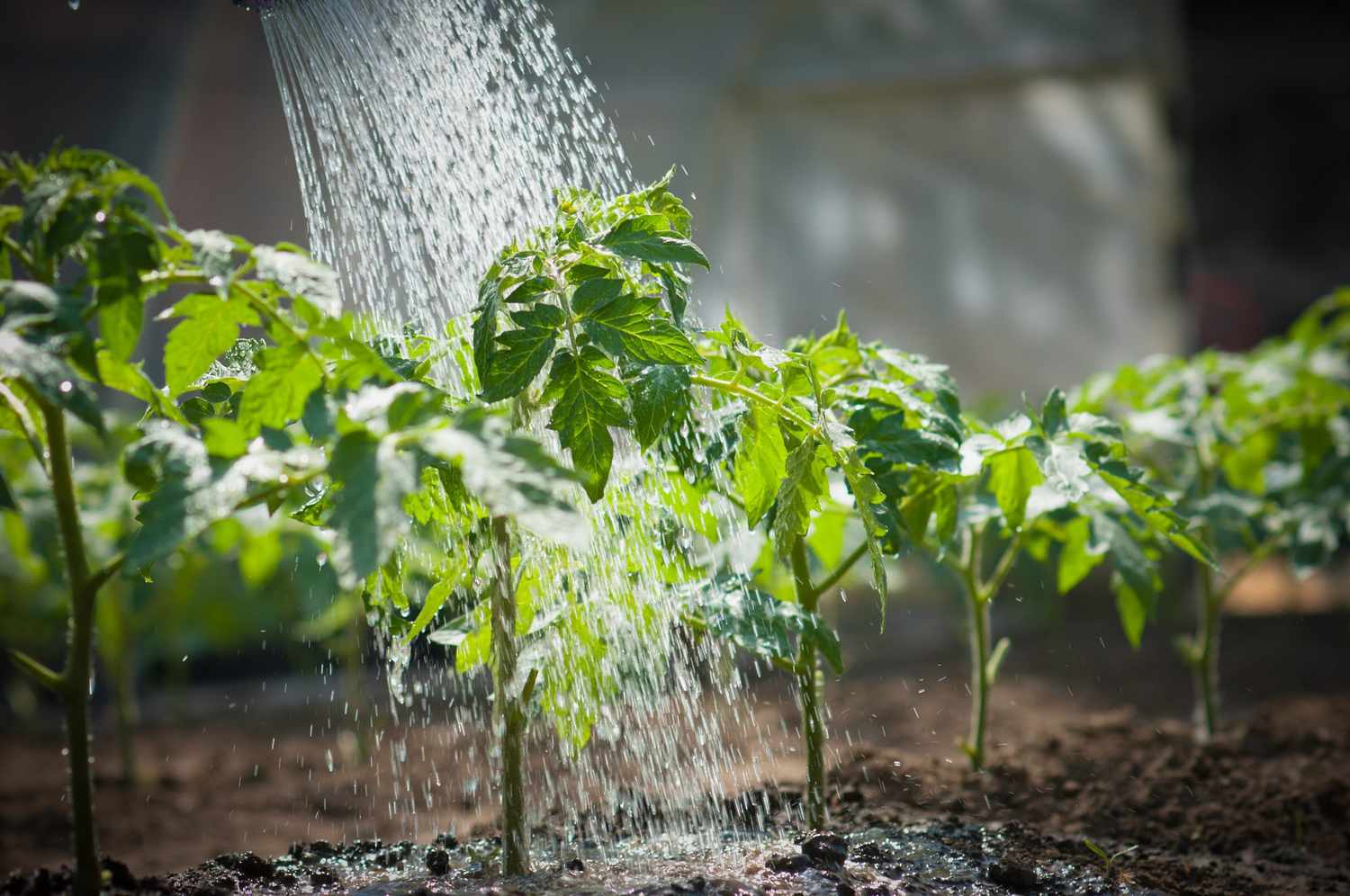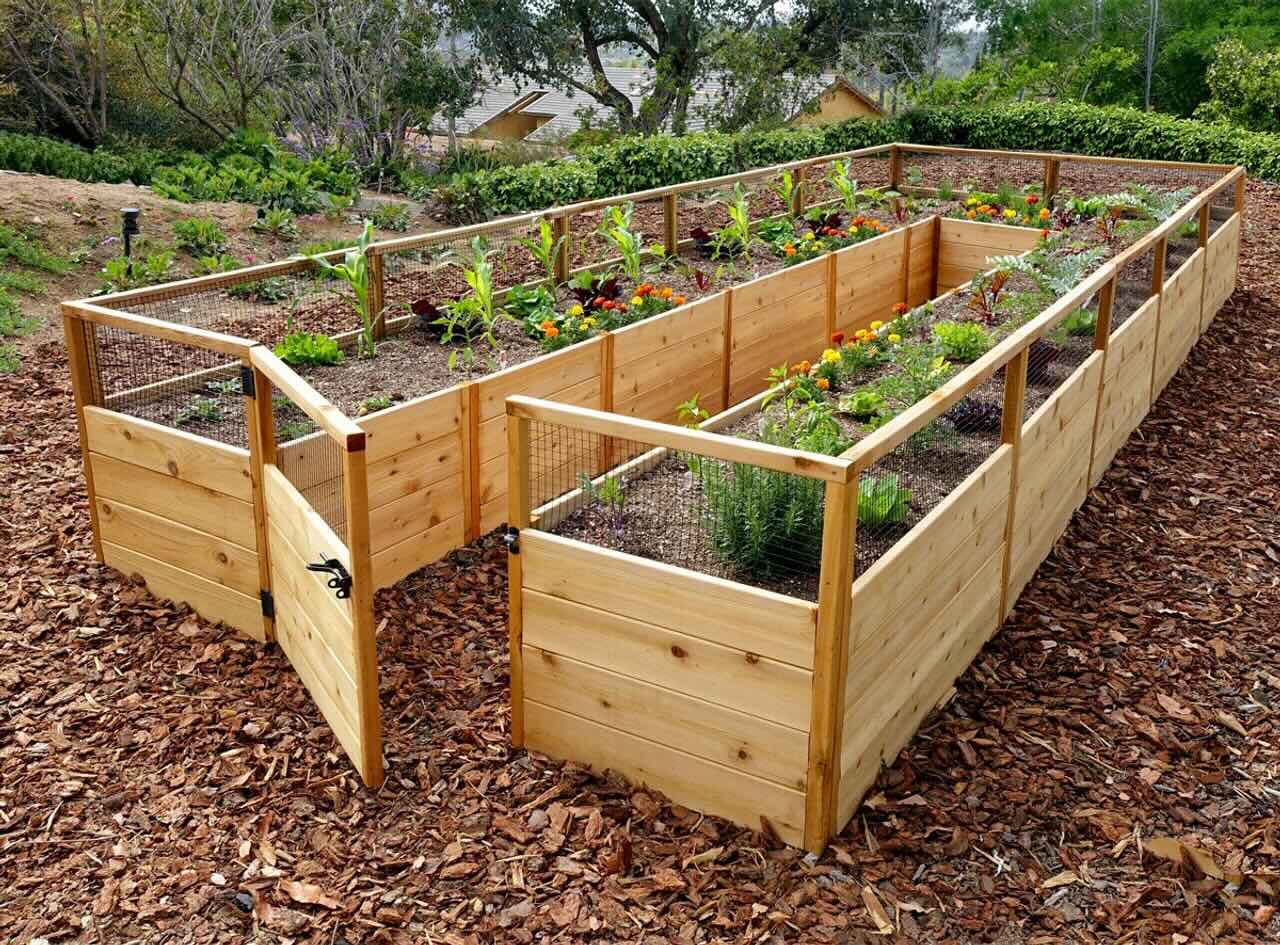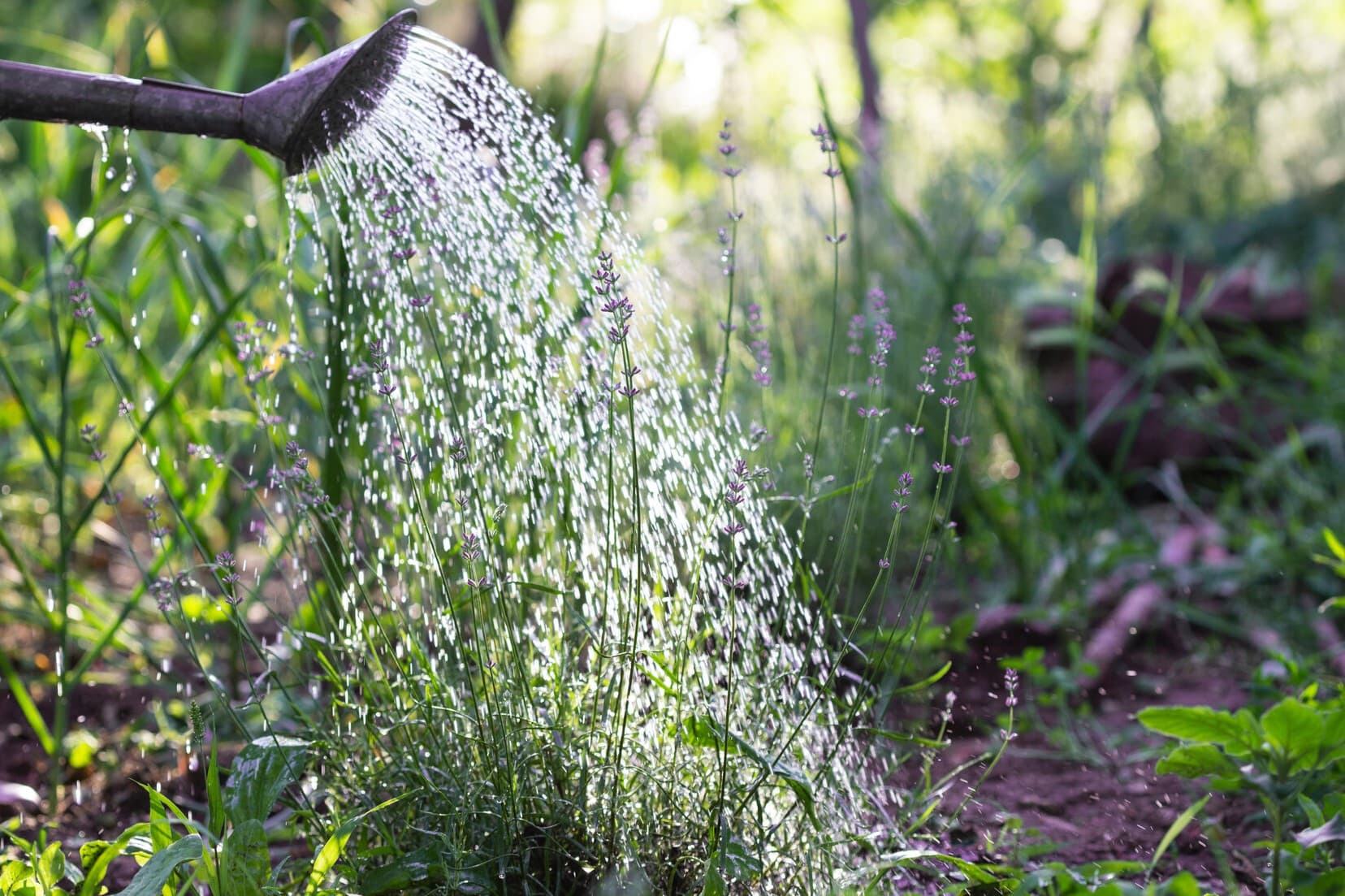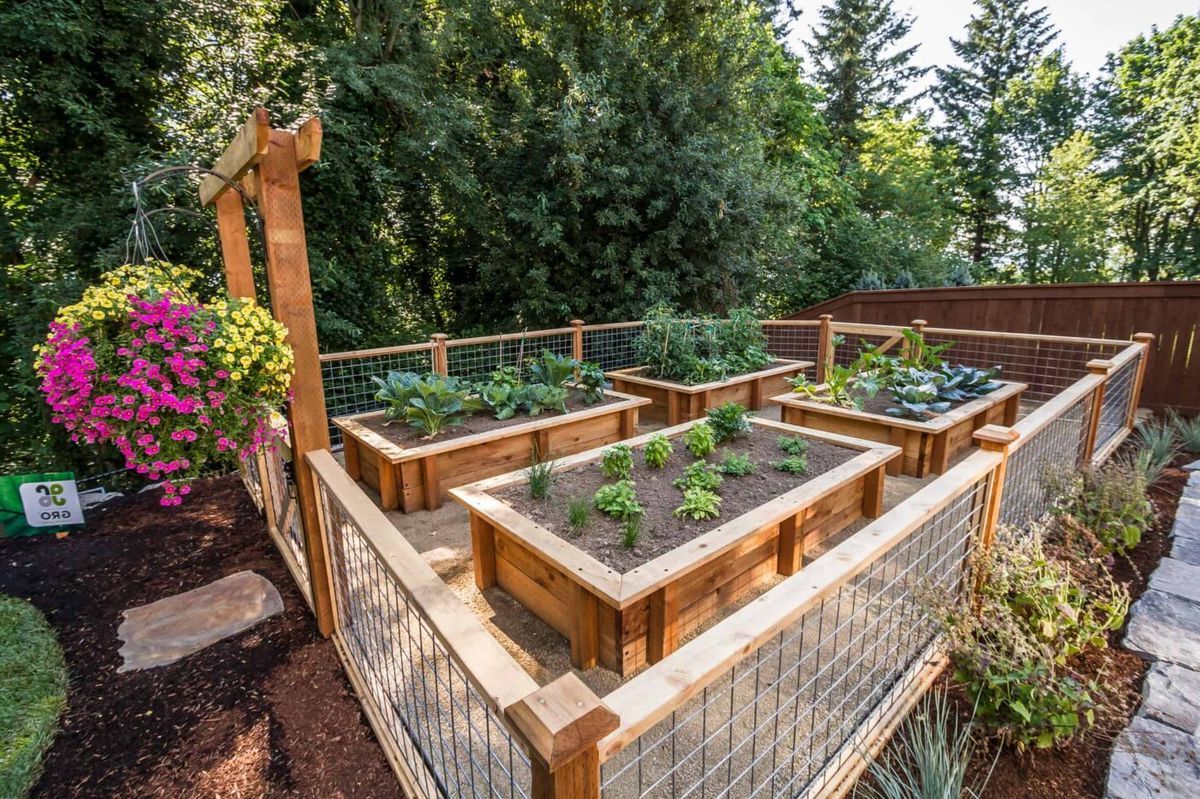Home>Gardening & Outdoor>Landscaping Ideas>How Often Should You Water A Raised Garden Bed


Landscaping Ideas
How Often Should You Water A Raised Garden Bed
Modified: September 2, 2024
Discover the best watering schedule for your raised garden bed with our expert landscaping ideas. Learn how often to water for a thriving garden.
(Many of the links in this article redirect to a specific reviewed product. Your purchase of these products through affiliate links helps to generate commission for Storables.com, at no extra cost. Learn more)
Factors to Consider Before Watering
Before reaching for the watering can, it's essential to take into account several factors to ensure that your raised garden bed receives the right amount of water. By considering these factors, you can effectively maintain the health and vitality of your plants while conserving water resources.
-
Soil Type: The type of soil in your raised garden bed plays a crucial role in determining watering frequency. Sandy soil tends to drain water quickly, requiring more frequent watering, while clay soil retains moisture for longer periods, necessitating less frequent watering.
-
Plant Species: Different plants have varying water requirements. Some species, such as succulents, are adapted to arid conditions and require minimal watering, while others, like leafy greens, thrive with consistent moisture. Understanding the specific needs of the plants in your raised garden bed is essential for providing adequate hydration.
-
Weather Conditions: Environmental factors, such as temperature, humidity, and wind, directly impact the rate of evaporation and plant water uptake. During hot and windy days, moisture evaporates rapidly, increasing the need for more frequent watering. Conversely, cooler and humid conditions may necessitate less frequent watering.
-
Maturity of Plants: Newly planted seedlings and young plants have shallower root systems and require more frequent watering to establish themselves. As plants mature and develop deeper roots, they can access moisture from lower soil layers, reducing the frequency of watering.
-
Mulching: The presence of mulch on the soil surface can significantly influence water retention. Mulch acts as a protective barrier, reducing evaporation and maintaining soil moisture levels. When properly mulched, raised garden beds may require less frequent watering.
-
Watering Equipment: The method and efficiency of watering also impact the frequency and distribution of moisture. Drip irrigation systems and soaker hoses deliver water directly to the root zone, promoting efficient water usage and reducing the need for frequent watering compared to overhead sprinklers.
By carefully considering these factors, you can tailor your watering practices to meet the specific needs of your raised garden bed, promoting healthy plant growth and sustainable water management.
Key Takeaways:
- Tailor your watering schedule by considering soil type, plant species, weather, maturity, mulching, and watering method for a healthy raised garden bed and efficient water use.
- Watch for signs of overwatering and underwatering, adjust watering frequency, and choose the best time of day to water for thriving plants in your raised garden bed.
Read more: What Size Should A Raised Garden Bed Be
Signs of Overwatering
Overwatering, although well-intentioned, can have detrimental effects on the health of plants in a raised garden bed. Recognizing the signs of overwatering is crucial for preventing waterlogged soil and potential root rot. Here are the key indicators that your plants may be receiving an excess of moisture:
-
Wilting and Yellowing Leaves: Surprisingly, overwatering can lead to symptoms similar to underwatering. Plants that receive too much water may exhibit wilting, as their roots suffocate in waterlogged soil, hindering their ability to absorb essential nutrients. Additionally, the leaves may turn yellow due to nutrient deficiencies caused by waterlogged conditions.
-
Mold and Mildew: Excessive moisture creates a favorable environment for mold and mildew to thrive. If you notice a fuzzy white coating on the soil surface or the lower leaves of your plants, it may indicate that the soil is overly saturated, leading to the development of harmful fungi.
-
Stunted Growth: Overwatered plants often experience stunted growth as their roots struggle to access oxygen in waterlogged soil. This impedes the plants' ability to uptake nutrients, resulting in reduced growth and overall vigor.
-
Foul Odor: A musty or sour smell emanating from the soil is a clear indication of excessive moisture. This odor is a result of anaerobic conditions in waterlogged soil, where beneficial aerobic microorganisms are replaced by harmful anaerobic bacteria, leading to the production of unpleasant odors.
-
Soil Compaction: Overwatering can cause the soil to become compacted and waterlogged, reducing its ability to provide adequate aeration to the roots. This compaction hinders root development and can lead to the decline of plant health.
-
Pest Infestations: Waterlogged soil weakens the plants' natural defenses, making them more susceptible to pest infestations. Insects and other pests are attracted to weakened plants, exacerbating the challenges faced by overwatered vegetation.
Recognizing these signs of overwatering empowers gardeners to take corrective measures, such as adjusting watering frequency and improving soil drainage, to restore the health and vitality of their plants. By maintaining a careful balance of moisture, gardeners can ensure optimal growing conditions for their raised garden beds, fostering robust and thriving plant life.
Signs of Underwatering
Underwatering, the insufficient provision of water to plants, can manifest in various ways, signaling the need for immediate attention to prevent detrimental effects on plant health. Recognizing the signs of underwatering is crucial for gardeners to intervene and provide the necessary hydration to sustain the vitality of their raised garden bed.
-
Wilting and Curling Leaves: One of the primary indicators of underwatering is the wilting and curling of leaves. When plants lack an adequate water supply, they conserve moisture by reducing the surface area of their leaves, resulting in a wilted appearance. Additionally, the edges of the leaves may curl inward as the plant attempts to minimize water loss through transpiration.
-
Dry and Crispy Foliage: Insufficient water uptake leads to dry and crispy foliage. The leaves of underwatered plants may become brittle and parched, losing their natural luster and suppleness. This is a protective mechanism employed by plants to minimize water loss and preserve their remaining moisture reserves.
-
Stunted Growth and Reduced Yield: Underwatered plants often exhibit stunted growth and reduced yield. The lack of water hinders essential physiological processes, such as photosynthesis and nutrient uptake, resulting in diminished plant development and lower productivity. This is particularly noticeable in fruiting plants, where inadequate water supply can lead to smaller or fewer fruits.
-
Leaf Discoloration: The leaves of underwatered plants may display signs of discoloration, such as browning or yellowing. This occurs as the plant prioritizes the distribution of limited water to vital areas, causing non-essential parts, such as older leaves, to exhibit discoloration and eventual desiccation.
-
Slow Recovery from Wilting: Unlike overwatered plants, which may recover quickly after the reduction of water, underwatered plants exhibit slow recovery from wilting. Even after watering, the leaves may remain wilted for an extended period, indicating the need for consistent and adequate hydration to restore turgidity.
-
Premature Leaf and Flower Drop: In an effort to conserve water, plants may shed leaves and flowers prematurely when faced with prolonged water scarcity. This adaptive response redirects the available water to essential parts of the plant, sacrificing non-essential structures to ensure the survival of the core plant system.
Recognizing these signs of underwatering empowers gardeners to take prompt action by adjusting their watering practices and providing the necessary hydration to rejuvenate their plants. By closely monitoring the visual cues and responding with appropriate measures, gardeners can ensure the sustained health and vigor of their raised garden bed, fostering optimal growing conditions for their cherished plant life.
Best Time of Day to Water
The timing of watering plays a pivotal role in the overall well-being of plants in a raised garden bed. While the act of watering is essential, the timing of this activity significantly impacts the effectiveness of moisture uptake and the resilience of plants against environmental stressors. Understanding the best time of day to water your raised garden bed is crucial for optimizing water utilization and promoting the health and vitality of your cherished plant life.
Morning: A Prime Window for Hydration
Watering your raised garden bed in the morning, preferably during the early hours, is widely regarded as the optimal time for several compelling reasons. As the sun rises, the morning presents a favorable environment for plants to absorb moisture effectively. The cooler temperatures and gentle morning sunlight minimize water loss through evaporation, allowing the soil to retain moisture and ensuring that the plants receive an ample water supply.
Moreover, morning watering provides plants with the hydration they need to face the day ahead. It equips them with the necessary moisture to withstand the potential heat and dryness that may ensue as the day progresses. By fortifying the plants with water early in the day, gardeners can help mitigate the impact of midday heat stress, enabling the plants to maintain their vigor and resilience.
Read more: Why A Raised Garden Bed
Midday: Caution Amidst Intense Heat
While midday watering is generally discouraged due to the heightened evaporation rates and the risk of scorching plant foliage, there are exceptions in certain circumstances. In exceptionally hot and arid climates, where plants may experience extreme water loss during the day, a brief misting or supplemental watering during midday can offer relief to the plants. However, this should be approached with caution, as excessive moisture on foliage during intense sunlight can lead to leaf burn and fungal issues.
Evening: Proceeding with Care
Watering your raised garden bed in the evening is a practice that requires careful consideration. While the evening presents cooler temperatures and reduced sun exposure, allowing water to permeate the soil and benefit the plants, there are potential drawbacks to evening watering. The prolonged presence of moisture on plant foliage during the night can create a conducive environment for fungal diseases to develop. Therefore, if evening watering is necessary, it is advisable to direct the water to the base of the plants, minimizing moisture contact with the leaves and stems.
In essence, the best time of day to water your raised garden bed is during the morning, offering plants the hydration they need to thrive throughout the day. While midday watering should be approached with caution, and evening watering requires careful execution, prioritizing morning hydration sets the stage for robust plant growth and resilience. By aligning your watering schedule with the optimal timing, you can empower your plants to flourish and thrive within your raised garden bed, fostering a vibrant and flourishing botanical haven.
Water your raised garden bed when the top inch of soil feels dry to the touch. This may be every 1-3 days, depending on the weather and the needs of your plants. Adjust based on rainfall and plant growth.
Frequency of Watering in Different Climates
The frequency of watering in a raised garden bed is profoundly influenced by the prevailing climate conditions, presenting a diverse array of challenges and considerations for gardeners seeking to maintain optimal soil moisture levels. Understanding the unique demands of different climates is essential for tailoring watering practices to meet the specific needs of plants, ensuring their sustained health and vitality.
In arid and desert climates characterized by intense heat and minimal precipitation, the demand for water is exceptionally high. The rapid evaporation rates and arid soil conditions necessitate frequent and thorough watering to sustain plant life. In these climates, raised garden beds benefit from deep, infrequent watering sessions to encourage deep root growth and minimize moisture loss through evaporation. Additionally, the implementation of mulching and the use of efficient irrigation systems, such as drip irrigation, can aid in conserving water and maintaining consistent soil moisture levels.
Conversely, in temperate and humid climates, where rainfall is more abundant and evaporation rates are comparatively lower, the frequency of watering may be less frequent. However, the presence of high humidity can create challenges such as prolonged moisture on plant foliage, increasing the risk of fungal diseases. Therefore, in these climates, it is crucial to strike a balance between providing adequate hydration and preventing water-related issues. Monitoring the moisture levels in the soil and adjusting the watering frequency based on the specific needs of the plants is essential for promoting healthy growth.
In regions with fluctuating climates, where seasons transition between wet and dry periods, adapting watering practices becomes paramount. During the dry seasons, raised garden beds require more frequent watering to compensate for the limited rainfall and heightened water demand. Conversely, in the wet seasons, it is crucial to assess the soil moisture levels regularly to prevent waterlogging and root rot. Adjusting the watering frequency in response to the shifting climate patterns enables gardeners to provide consistent and appropriate hydration to their plants throughout the year.
Furthermore, in coastal and maritime climates, the proximity to large bodies of water influences the atmospheric moisture levels, impacting the watering needs of raised garden beds. The moderating effect of maritime climates can mitigate extreme temperature fluctuations, reducing the urgency of frequent watering. However, the potential for salt-laden winds in coastal areas necessitates careful consideration of plant hydration and soil salinity management.
By recognizing the distinct characteristics of different climates and their implications for plant hydration, gardeners can adapt their watering practices to align with the specific requirements of their raised garden beds. This tailored approach enables the promotion of thriving and resilient plant life, harmonizing with the unique environmental conditions present in diverse climates.
Now that you've mastered the delicate balance of watering your garden, why not take the next step? Building your own raised garden beds can transform your gardening experience, giving your plants the perfect environment to flourish. With practical insights on raised bed gardening, our next guide will walk you through creating a robust, bountiful space. Whether you're a seasoned gardener or just starting out, these tips will ensure your garden is set up for success.
Frequently Asked Questions about How Often Should You Water A Raised Garden Bed
Was this page helpful?
At Storables.com, we guarantee accurate and reliable information. Our content, validated by Expert Board Contributors, is crafted following stringent Editorial Policies. We're committed to providing you with well-researched, expert-backed insights for all your informational needs.















0 thoughts on “How Often Should You Water A Raised Garden Bed”